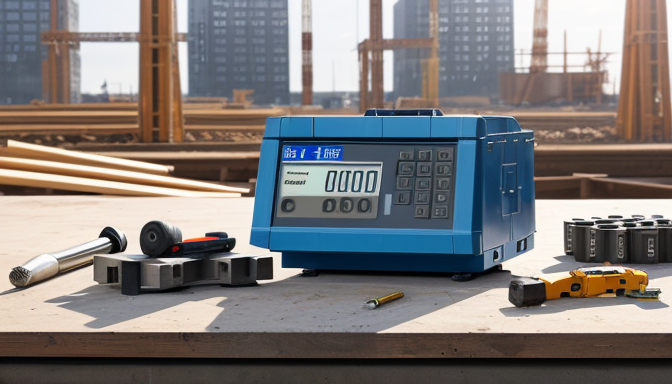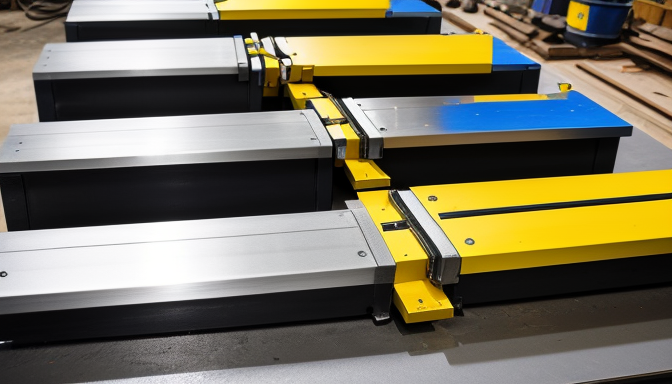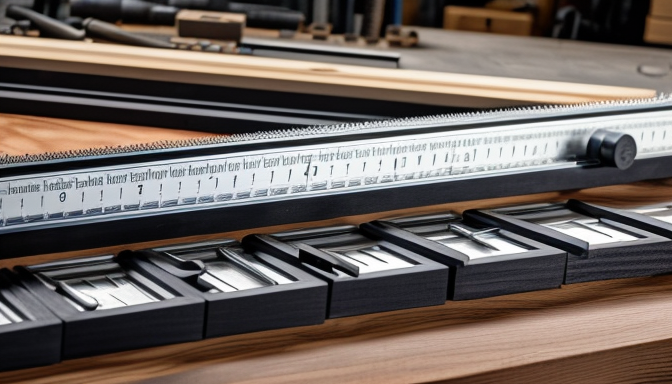Cee steel profiles are an essential component in the construction and manufacturing industries. They are known for their strength and versatility, making them a popular choice for various applications. Imagine building a sturdy house or a robust framework for a warehouse. Cee steel profiles are often at the heart of these projects, providing the necessary support and stability.
So, what exactly is a Cee steel profile? Simply put, it is a type of steel section shaped like the letter “C”. This unique shape offers several advantages. For instance, it allows for easy stacking and handling, which is a big plus on busy construction sites. Plus, the open shape makes it easier to attach other materials, like drywall or insulation, when building walls.
But why should you care about Cee steel profiles? Well, if you’re involved in construction, understanding these profiles can save you time and money. They come in various sizes and weights, which means you can choose the right one for your specific project needs. Whether you’re constructing a small shed or a large commercial building, there’s a Cee steel profile that fits your requirements.
In the upcoming sections, we’ll dive deeper into important aspects like price, weight, properties, and sizes of Cee steel profiles. Each of these factors plays a vital role in your project planning. Knowing how much they cost can help you budget effectively. Understanding their weight can guide you in choosing the right tools and equipment for handling them. And being aware of their properties can ensure you select the best type for your application.
To give you a clearer picture, here’s a brief overview of what we’ll cover:
- Price: What influences the cost of Cee steel profiles?
- Weight: How does weight affect your construction process?
- Properties: What makes Cee steel profiles durable and reliable?
- Sizes: Which size is ideal for your specific needs?
By the end of this article, you’ll have a comprehensive understanding of Cee steel profiles. You’ll be better equipped to make informed decisions for your construction projects. So, let’s get started!
Cee Steel Profile Price
Understanding the cost factors associated with Cee steel profiles is crucial for budgeting in construction projects. When you think about it, the price of materials can make or break your project. So, what influences these prices? Let’s break it down.
First off, the market demand plays a significant role. When demand is high, prices tend to rise. Conversely, when the market is saturated, you might find prices dropping. It’s a bit like supply and demand in action. Also, consider the raw material costs. Steel prices fluctuate based on global markets. If the cost of iron ore goes up, so does the price of Cee steel profiles. It’s a simple equation!
Additionally, the manufacturing process affects pricing. Profiles that require more complex manufacturing techniques tend to cost more. For instance, custom sizes or specific coatings can add to the final price. You might be wondering, “How can I get the best deal?” Well, shopping around is key. Compare prices from different suppliers. Don’t hesitate to ask for quotes!
Here’s a quick overview of some typical price ranges for Cee steel profiles based on their size and thickness:
| Profile Size | Thickness (mm) | Average Price ($/meter) |
|---|---|---|
| 100×50 | 1.5 | 2.50 |
| 150×75 | 2.0 | 3.00 |
| 200×100 | 2.5 | 4.00 |
These prices can vary based on location and supplier. Always check your local market. You might find better deals closer to home. Plus, keep an eye on seasonal trends. Prices can dip during off-peak construction seasons.
In conclusion, knowing the price of Cee steel profiles is more than just a number. It’s about understanding the factors that influence it. By staying informed and doing your research, you can ensure your project stays within budget. Remember, every penny counts!

Cee Steel Profile Weight
When it comes to Cee steel profiles, understanding their weight is essential for any construction project. Why? Because the weight affects how these profiles are handled, transported, and ultimately, how they perform in structural applications. Think about it: if you’re working on a project that requires a lot of lifting, you want to ensure that the materials you choose are manageable. Heavy materials can slow down progress and increase labor costs.
On average, the weight of Cee steel profiles varies based on their dimensions and thickness. For instance, a standard Cee section might weigh anywhere from 1.5 to 5.0 kilograms per meter. This range can significantly impact your project’s logistics. If you’re not careful, you could find yourself facing unexpected challenges. Imagine trying to hoist a heavy profile into place, only to realize it’s too cumbersome for your crew. That’s a recipe for frustration!
To give you a clearer picture, here’s a simple table that outlines the average weights of common Cee steel profile sizes:
| Profile Size (mm) | Weight (kg/m) |
|---|---|
| 100 x 50 x 2.5 | 3.5 |
| 150 x 75 x 3.0 | 5.0 |
| 200 x 100 x 4.0 | 6.5 |
As you can see, the weight can vary quite a bit. When selecting a Cee steel profile, consider not just the weight but also how it fits into your overall design. Are you building something that needs extra support? Or are you working on a lighter structure? The right choice can make all the difference.
Furthermore, the weight of Cee steel profiles also relates to their strength and stability. Heavier profiles often provide better load-bearing capabilities, which is crucial in construction. If you’re unsure about what weight to choose, consulting with a structural engineer can provide valuable insights. They can help you navigate the complexities of material selection, ensuring that your project remains safe and efficient.
In conclusion, the weight of Cee steel profiles is not just a number; it’s a vital aspect of your construction planning. By understanding the implications of weight, you can make informed decisions that enhance both the efficiency and safety of your project. So, the next time you’re browsing through profiles, remember: weight matters!
Cee Steel Profile Properties
Cee steel profiles have become a staple in the construction and manufacturing industries. Why? It’s all about their unique properties that make them incredibly versatile. When you think of Cee steel, think of strength, durability, and flexibility. These profiles can handle a lot of stress, which is crucial in construction. Imagine building a house or a bridge. You want materials that won’t buckle under pressure, right? That’s where Cee steel profiles shine.
One of the standout features of Cee steel profiles is their mechanical properties. They offer high tensile strength, which means they can withstand pulling forces without breaking. This is essential for structural integrity. Additionally, they have good yield strength, allowing them to deform under stress but return to their original shape when the stress is removed. Think of it like a rubber band. You can stretch it, but it snaps back. In construction, this property helps ensure that structures remain stable over time.
Another critical aspect is their durability. Cee steel profiles are resistant to various environmental factors. Whether it’s rain, wind, or even corrosion, these profiles hold their ground. They can last for decades with minimal maintenance. This durability translates to cost savings in the long run. Fewer repairs mean more money in your pocket. Plus, they can be coated for extra protection, enhancing their lifespan even further.
Now, let’s talk about resistance characteristics. Cee steel profiles are not just strong; they also resist various forms of damage. For example, they are less likely to warp or bend compared to other materials. This makes them ideal for use in high-stress environments. Imagine a factory where heavy machinery operates daily. You’d want materials that won’t fail, right? Cee steel profiles fit the bill perfectly.
To give you a clearer picture, here’s a quick comparison of some properties:
| Property | Value |
|---|---|
| Tensile Strength | Up to 400 MPa |
| Yield Strength | Up to 250 MPa |
| Corrosion Resistance | High (with proper coating) |
In summary, the properties of Cee steel profiles make them a go-to choice for builders and manufacturers alike. Their mechanical strength, durability, and resistance characteristics ensure that they can meet the demands of various applications. So, whether you’re constructing a new building or manufacturing components, Cee steel profiles are worth considering. They combine strength and longevity, making them a smart investment for any project.

Cee Steel Profile Sizes
When it comes to Cee steel profiles, size truly matters. These profiles are not just a one-size-fits-all solution. They come in various dimensions to meet the specific needs of different construction projects. Choosing the right size is essential for ensuring stability and strength in your structures. Imagine trying to build a house with mismatched building blocks; it just wouldn’t hold up!
Typically, Cee steel profiles are available in a range of sizes, which can be categorized based on their height, width, and thickness. The most common sizes are often determined by industry standards, yet custom sizes can also be manufactured to fit unique requirements. Here’s a quick breakdown of standard dimensions:
| Profile Height (mm) | Profile Width (mm) | Thickness (mm) |
|---|---|---|
| 100 | 50 | 2.0 |
| 150 | 75 | 2.5 |
| 200 | 100 | 3.0 |
| 250 | 125 | 3.5 |
These dimensions are just a starting point. Depending on your project’s needs, you might require profiles that are taller, wider, or thicker. The flexibility in sizes allows engineers and builders to tailor their choices based on the load requirements and the overall design of the structure.
Another important factor to consider is the application. For example, if you’re working on a lightweight structure, a smaller profile may suffice. However, for heavy-duty applications, you’ll want to opt for larger, sturdier profiles. Think of it like choosing the right tool for a job; using a hammer for a nail is great, but you wouldn’t use a tiny one for a big job!
In conclusion, the size of Cee steel profiles is not merely a detail; it’s a critical aspect that influences the performance and safety of your construction projects. Always assess your specific needs and consult with professionals if you’re unsure about which size to choose. After all, the right size can make all the difference in achieving a successful build.
Frequently Asked Questions
- What is a Cee steel profile?
A Cee steel profile is a type of structural steel shape that resembles the letter “C”. It’s widely used in construction and manufacturing for its strength and versatility. These profiles are great for framing, supports, and other structural applications.
- How much do Cee steel profiles typically cost?
The price of Cee steel profiles can vary depending on factors such as size, thickness, and market demand. On average, you can expect to pay anywhere from $0.50 to $2.00 per pound, but it’s always a good idea to check with suppliers for the most accurate pricing.
- What are the common sizes of Cee steel profiles?
Cee steel profiles come in a range of sizes to accommodate different construction needs. Common sizes include 3″, 4″, and 6″ depths, with various flange widths. Choosing the right size is crucial for ensuring structural integrity and performance.
- What properties make Cee steel profiles ideal for construction?
Cee steel profiles are known for their high strength-to-weight ratio, durability, and resistance to various environmental factors. They can withstand heavy loads and are less prone to warping or bending, making them a reliable choice for construction projects.
- How do I determine the weight of a Cee steel profile?
The weight of a Cee steel profile can be calculated using its dimensions and the density of steel (approximately 490 pounds per cubic foot). Most suppliers provide weight tables for standard sizes, which can help you quickly estimate the weight you’ll be working with.
- Can Cee steel profiles be used for residential applications?
Absolutely! Cee steel profiles are not just for commercial buildings; they can also be used in residential construction for framing, garages, and sheds. They provide excellent support and can be a cost-effective option for homeowners.
